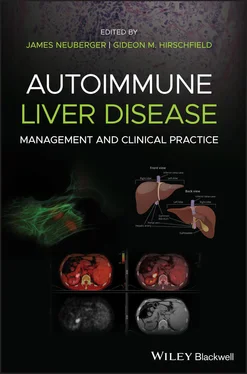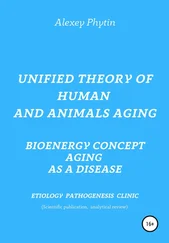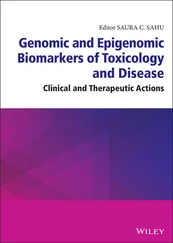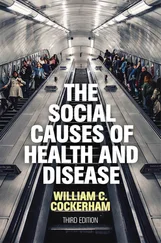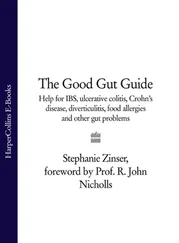From an evolutionary perspective, the immune system was one of the first physiological components of life – even plants have some form of a response against pathogens. The evolution of immunity was of course to protect species from the outside world and this is as much true of people as it is of earthworms. However, on occasion, the immune system attacks one's own tissues, a process known as autoimmunity. Autoimmunity affects a variety of species and clearly increases with inbreeding and genetic diversity. Although we now catalog more than 100 different autoimmune diseases, the etiology of virtually all of autoimmunity remains enigmatic other than the concept, as noted below, of genetic predisposition and one or more environmental stimuli. Indeed, understanding the etiology of autoimmunity, while a major problem, has not deterred effective treatments. In the case of rheumatoid arthritis, we have very effective treatments directed at the mediators of inflammation without knowing what initiates the entire process.
To put this in perspective, it should be re‐emphasized that the immune system is the most pleiotropic and promiscuous physiological component of the human body. Indeed, the potential individual repertoire may include up to 10 13arrangements of the T‐cell receptor (TCR). This magnitude of diversity is a result of evolutionary pressure to protect our species from the outside world and therefore protect us from a myriad of potential pathogens. Interestingly, however, this diversity is not limited to humans. People, dogs, cats, fish and even earthworms exhibit evidence of an immune system, but the pleiotropic nature of immune responses becomes more sophisticated in higher animals.
Ironically, despite the sophistication of the immune system, our recognition of its importance and the multitude of ways in which it can harm the body is a relatively recent development. Although many physicians can be credited with establishing immunology as a science, it is clear that the first giant of immunology was Clemens von Pirquet, born in 1874 in Vienna. Von Pirquet devoted his early work to understanding the immune response to scarlet fever and, in collaboration with multiple coworkers, was among the first to identify precipitants in human sera. He also coined the word “allergy” which essentially means deviation from self. However, it was not until the work of Paul Ehrlich on hemolytic anemia that scientists began to appreciate the possibility that our pleiotropic immune system could attack our own body. Ironically, the first textbook devoted to autoimmunity was not published until 1963, or over 60 years after Ehrlich's initial observations. This book, authored by Mackay and Burnett, was published in a series of monographs entitled American Lectures in Living Chemistry (Charles Thomas Publishers, Springfield, Illinois). This textbook contains 12 chapters devoted to specific autoimmune diseases. The concept of the forbidden clone was discussed and, of particular interest to liver specialists, the terms active chronic and lupoid hepatitis were introduced. Absent from this book was of course the concept of lymphoid subpopulations, the genetics of the immune response, major histocompatibility complex (MHC) restriction and, especially, discussion of maternal–fetal immune homeostasis. These omissions are easily forgiven when it is realized that the tools used by immunologists in the 1960s had not changed significantly in over three decades and relied particularly on diffusion and electrophoresis.
This issue of maternal–fetal immune homeostasis is critical in the introduction of liver autoimmunity. Whether it is a human or a mouse, the fetus is a privileged site and spared from any immune attack from the mother. The basis for this tolerance resides in the liver. The liver was known even in ancient Greek mythology to be an organ capable of regeneration. Prometheus stole from the Gods, giving it away to mortals. As a result, he was chained to a rock by Zeus, where each day an eagle pecked out his liver. Presumably, Prometheus survived because of liver regeneration. However, with that singular exception, and the use of liver in the everyday kitchen, the liver as an organ responsible for immunity was ignored. Indeed, a major basis for maternal–fetal tolerance is the portal circulation. It is therefore ironic that the organ which is most important for the critical element of immune tolerance can itself become a victim of autoimmunity, manifest in such diseases as autoimmune hepatitis, primary biliary cholangitis, primary sclerosing cholangitis and IgG4‐associated disease.
In this volume, Neuberger and Hirschfield have taken up the challenge of providing the scientific basis for liver autoimmunity. Liver autoimmunity has often been a stepchild compared with other autoimmune diseases. The pharmaceutical industry has made enormous efforts in helping patients with rheumatoid arthritis, with psoriasis, and of course with human viral hepatitis, but the commitment to liver autoimmunity, not only in industry but in academia, has been modest at best. And yet the same generic factors that lead to both organ‐specific and systemic autoimmune diseases are at play in the liver autoimmune syndromes, since the development of disease requires a genetic predisposition and an environmental stimulus. This is a feature that I have coined “bad genes and bad luck.” However, this volume goes beyond descriptive immunobiology. It provides a rigorous analysis of multiple critical areas of why patients become susceptible and why their natural history of disease may vary, including for example the roles of genetics and epigenetics, environmental exposures, the specific and usual clinical challenges faced by patients with liver disease, and of course helping the particularly difficult and challenging patient (i.e. liver disease during pregnancy). This volume also fills a major void in explaining the role of liver transplantation by placing not only its scientific significance in perspective, but also tackling the difficult subject of disease recurrence following liver transplant. There remain many controversies and multiple unanswered questions, and the book ends with an attempt to make sense of overlap and crossover syndromes, and the relationship to extrahepatic abnormalities in patients with autoimmune liver disease. Finally, it focuses on the most important element, which is clinical management and how we may help our patients. At the end of the day, whatever the scientific interest may be, the only fundamental question of value is whether our work and our publications will have a positive impact on the health of people. This volume should fill such a need.
Section I Scientific Basis of Clinical Autoimmune Liver Diseases
1 Introduction to the Physiology, Immunology and Pathology of the Liver and Biliary Tree
Marco Carbone1 and Mario Strazzabosco2
1 Division of Gastroenterology, University of Milan Bicocca, Milan, Italy
2 Digestive Disease Section, Yale Liver Center, Yale University School of Medicine, New Haven, CT, USA
The liver has many functions including metabolic homeostasis, disposal of endotoxins and xenotoxins, metabolism of bilirubin and urea, and bile formation and secretion. The process of bile formation depends on the liver synthesis and the canalicular secretion of bile acids. Besides their roles in dietary lipid absorption and cholesterol homeostasis, bile acids also play a key role as signaling molecules in the regulation of hepatic metabolism and energy homeostasis. The regenerative ability of the liver lies in the multiple niches of biliary tree stem cells.
Keywords bile formation; carbohydrate metabolism; hepatocyte; cholangiocytes lipid metabolism; metabolic zonation; protein metabolism; bile acid.
Читать дальше
